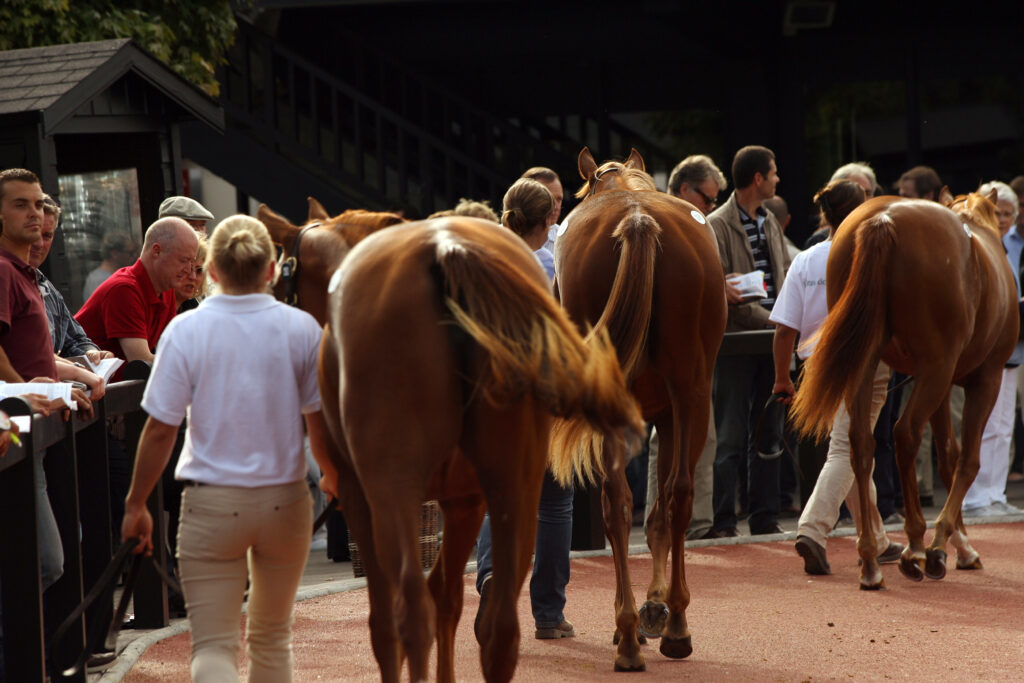Here’s a glossary of common horse racing terms:
A–C
- Allowance Race – A race where horses carry weight based on conditions such as past performance.
- Apprentice Jockey – A jockey who is still in training and receives weight allowances.
- Backstretch – The straight part of the track opposite the finish line.
- Blinkers – A piece of equipment used on a horse’s head to limit its vision and keep it focused.
- Break Maiden – When a horse wins its first race.
- Claiming Race – A race in which horses are available for purchase (claimed) at a set price.
- Colt – A male horse under four years old.
D–F
- Dam – The mother of a horse.
- Derby – A race for three-year-old horses, such as the Epsom Derby.
- Distance – The length of a race, e.g., five furlongs or one mile.
- Eased – When a jockey stops urging a horse to prevent injury or conserve energy.
- Exacta (or Forecast) – A bet where the bettor picks the first two horses in the correct order.
- Filly – A female horse under four years old.
- Furlong – A unit of measurement in horse racing, equal to 1/8 of a mile (200 meters).
G–L
- Gelding – A castrated male horse.
- Hand – A unit of measurement for a horse’s height (one hand = four inches).
- Handicap Race – A race where horses carry different weights to level the competition.
- In The Money – A horse finishing in the top three positions (or four in some betting markets).
- Jockey – The rider of a racehorse.
- Length – The measurement of a horse’s body, used to describe winning margins.
M–R
- Maiden – A horse that has never won a race.
- Mare – A female horse aged four years or older.
- Odds-on – A betting term where the horse is favoured to win with odds lower than even money.
- Photo Finish – When two or more horses cross the finish line closely, requiring a photograph to determine the winner.
- Purse – The total prize money available in a race.
- Silks – The colourful jacket worn by jockeys, representing the horse owner.
- Stewards – Officials who enforce the rules of horse racing.
S–Z
- Sire – The father of a horse.
- Sprint – A short-distance race, usually up to one mile.
- Stakes Race – A high-quality race with entry fees contributing to the prize fund.
- Stayer – A horse that performs well in long-distance races.
- Triple Crown – A series of three major races for three-year-old horses (e.g., 2000 Guineas, Epsom Derby, St Leger in the UK).
- Weanling – A foal that has been weaned from its mother, typically before turning one year old.
Yearling – A horse that is one year old.
Flat horse racing consists of several types of races, each with distinct conditions and classifications. Here’s an overview of the different types of races in flat racing:
- Maiden Races
- Races for horses that have never won before.
- Typically contested by young horses (two- or three-year-olds).
- Often used to identify promising horses for higher-level competitions.
- Novice Races
- For horses that have won no more than two races.
- Helps horses progress from maiden races to higher-level competitions.
- Conditions Races
- The weight carried by each horse is determined by a specific set of conditions, such as:
- Age
- Sex
- Previous wins
- Breeding status
- These races serve as stepping stones to higher-class competitions.
- Stakes Races
- Higher-quality races with entry fees contributing to the prize pool.
- Includes well-known Group and Listed races.
- Handicap Races
- Each horse is assigned a weight by the handicapper to level the playing field.
- Theoretically, all horses should have an equal chance of winning.
- Classified by ratings, with higher-rated horses competing in stronger handicaps.
- Group Races (Pattern Races)
- The highest level of competition in flat racing.
- Divided into three categories:
- Group 1 – The top level (e.g., Epsom Derby, 2000 Guineas, Prix de l’Arc de Triomphe).
- Group 2 – Just below Group 1, but still high quality (e.g., Hardwicke Stakes).
- Group 3 – Competitive races leading up to Group 1 and 2 events (e.g., Greenham Stakes).
- Listed Races
- Just below Group races in quality.
- Often used to prepare horses for higher-class competitions.
- Selling & Claiming Races
- Selling Races – The winner must be auctioned after the race.
- Claiming Races – All horses can be bought for a set price before the race.
- Classified Stakes
- Restricted to horses rated within a specific range (e.g., 0-75, 76-90).
- Offers competitive racing at different ability levels.
- Apprentice & Amateur Races
- Apprentice Races – For young jockeys still in training.
- Amateur Races – For jockeys who do not hold a professional license.
- Auction & Median Auction Races
- Restricted to horses that were purchased below a certain price at auction.
- Helps smaller owners and breeders compete.
